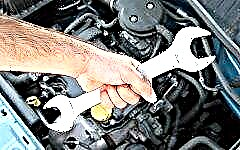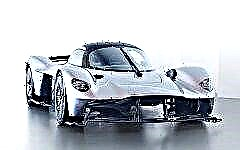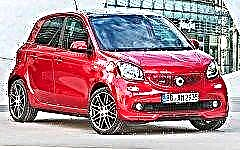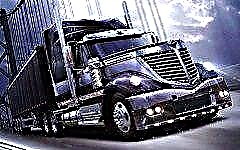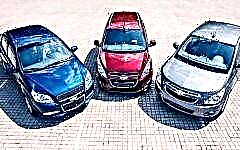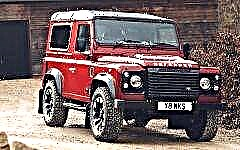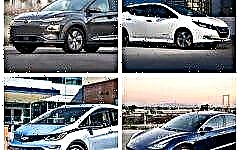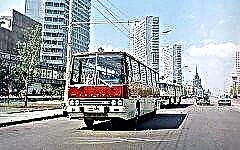

The content of the article:
- Fejes
- Raba super
- MAVAUT
- Dutra godollo
- Pente 500
- Alba Regia and Balaton
- HODGEP PULI
- Csepel
- Ikarus 280
- Automotive industry of modern Hungary
Many people will be able to name car brands from Germany, Japan, USA, Italy and Korea. But when it comes to the Hungarian car industry, the situation changes radically - for the majority it becomes an unbearable task to name at least one car brand that was born in Hungary.
To remedy this situation, we have selected the TOP-10 of the most interesting Hungarian cars.
Fejes

Photo: 1926 Fejes car
Fejes is a small car company that existed for 10 years from 1922 to 1932. Despite its long existence, the company produced only 45 cars, most of which were bought by the local postal service.
The photo above shows the 1926 Fejes.with a touring body and unusually positioned headlights. By the way, the company's model range included cars with one headlight, but, as you might guess, such a solution was not in demand.
Raba super

Pictured: Raba Super truck
In 1896, the Raba machine-building enterprise was established in the city of Gyереr, which received its name in honor of the Raba river of the same name. Initially, the plant was engaged in the production of cars and other railway equipment, but already in 1904 the company produced a tractor with all steering and driving wheels.
Between 1936 and 1951, the company produced the "Super" model, which was available as a bus, small van and truck. During the Second World War, the production of the vehicle was temporarily suspended. The main advantages of the car were high ground clearance, a sufficiently high-torque engine and a reliable chassis.
MAVAUT

Photo: tourist bus MAVAUT
In 1963, the MAV division of the Hungarian Railways created a pair of exclusive MAVAUT buses for tourist travel.
A distinctive feature of the buses was their unusual exterior design, as well as unusual seats made of synthetic cord, attached to a special metal base.
Currently, there is only one such car left in the world, which was found by restorers and restored to standard condition.
Dutra godollo

In the photo: dump truck Dutra Godollo 116
In 1956, a small Dutra mining dump truck, designed on the basis of a tractor chassis, saw the light of day. And after another 10 years, a 10-ton model of the Godollo 116 dump truck was built on its basis, which lasted on the conveyor until 1973.
After that, the company decided to focus on the production of tractors, which were much more popular than highly specialized dump trucks.
Pente 500

Pictured: Pente 500 compact car
During World War II, Janos Pentelenyi designed the Pente 500 compact car, using the concept of the legendary VW Beetle - a constructively simple and most affordable car.
Initially, the car was planned to be produced with a 4-stroke engine, but in order to reduce the cost of production and the subsequent price, the choice was stopped on a 2-stroke engine with an air-cooled system.
Small-scale production of the model started in 1946, and already in 1948, the enterprise where the car was produced was nationalized, after which it was decided to discontinue the production of the Pente 500.
Alba Regia and Balaton

In the photo: Alba Regia and Balaton micromobiles - left and right, respectively
Since socialist Hungary was a member of the CMEA (Council for Mutual Economic Assistance), it could not independently determine what goods it could produce. In addition, it was from the hand of the CMEA that a ban on the production of passenger cars was adopted in Hungary, which the country tried to "bypass" by developing micromobiles with motorcycle engines.
Among them were two models Alba Regia and Balaton - Erno Rubik Sr. participated in the development of the first (the father of the same Rubik who gave the world the fascinating puzzle "Rubik's cube").
Both cars used a similar design: an aluminum body, small aircraft wheels, and a Pannonia motorcycle engine.
HODGEP PULI

Photo: microcar HODGEP PULI
HODGEP PULI is a Hungarian microcar produced from 1986 to 2000. The car was driven by a 4-kilowatt motor, so a driver's license was not needed to operate it.
This car was quite popular in France, which became the main sales market for the model.
It is noteworthy that towards the end of production, the car was equipped with a fully electric power plant.
Csepel

In the photo: truck Csepel D450
The machine-building plant Csepel was built in 1949 in the eponymous suburb of Budapest. A year later, the production of the first trucks based on the Austrian model Steyr bogie began.
A distinctive feature of the new cars was the simplicity of design and a high level of reliability, thanks to which the cars were massively exported to neighboring countries, including the USSR.
By the beginning of the 70s, the design of Csepel trucks was outdated morally and technically. - This is especially true for the structure of the cabin, which did not provide the required level of safety. For this reason, the Hungarians, having decided not to reinvent the wheel, began to use the cabins of the Polish Star and Jelcz models.
Ikarus 280

In the photo: Ikarus 280 bus
In 1985, the Ikarus company was founded in Budapest, which later was destined to become one of the most famous Hungarian car brands. In the first years of its existence, the company was engaged in the production of carriages and metal products, and since 1913 it was redesigned to produce cars and buses.
In subsequent years, Ikarus abandoned the production of passenger cars, concentrating on the production of exclusively bus transport.
The most iconic model in the USSR is deservedly considered the Ikarus 280 model., copies of which can still be found on domestic roads. The company is currently one of the leading bus manufacturers in Europe.
Automotive industry of modern Hungary

After socialism in Hungary sank into oblivion, large car manufacturers flocked to the country - among the first were the Japanese Suzuki and the German Opel. In subsequent years, Mercedes, VW and Ford also appeared in the country.
Both the automakers and the Hungarians themselves benefited from this: the former received a cheap labor force, and the latter - jobs and a lower cost for cars produced in Hungary.
Currently, the country's car factories produce cars not only for the domestic market, but are also one of the key suppliers of cars and components to the countries of the near and far abroad.
Thus, the share of exports of transmissions, braking systems, suspension elements, interior trim and electronics reaches 90%, which is one of the highest rates among European countries. And even if today in Hungary there is only one enterprise engaged in the production of cars of its own design (the Ikarus company), in the coming years there may be entrepreneurs who can revive the once popular domestic car brands.

